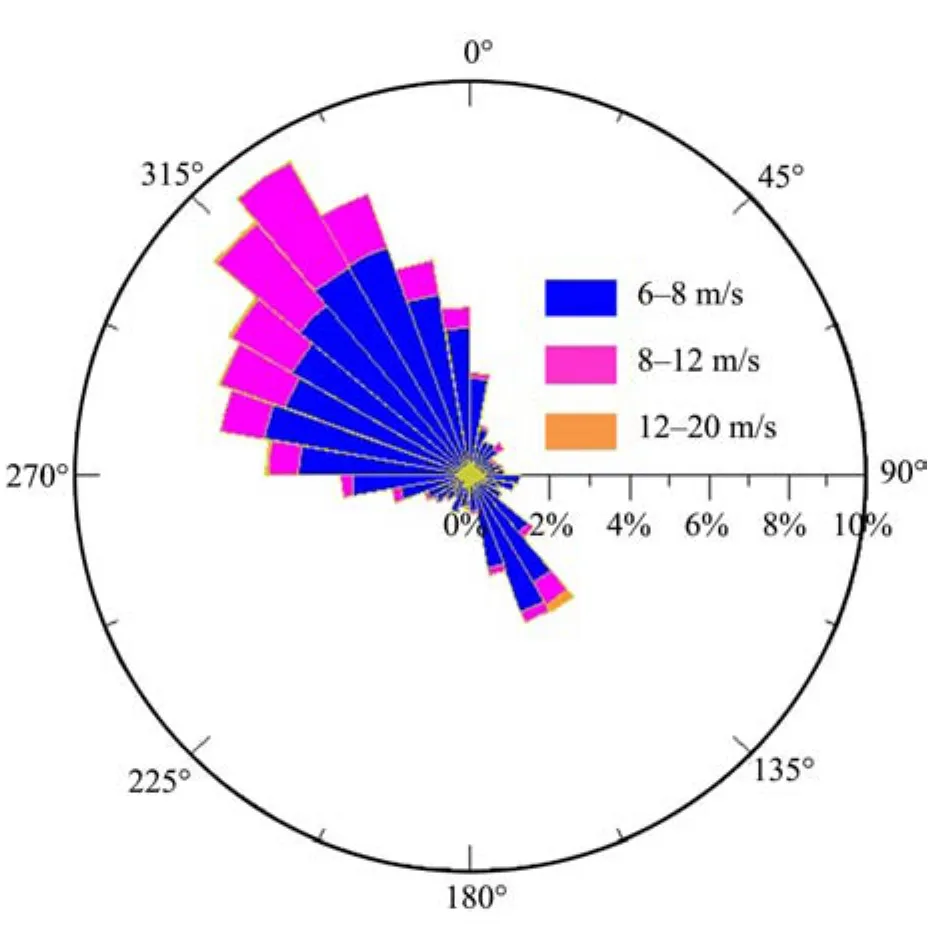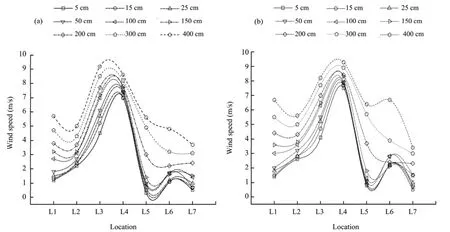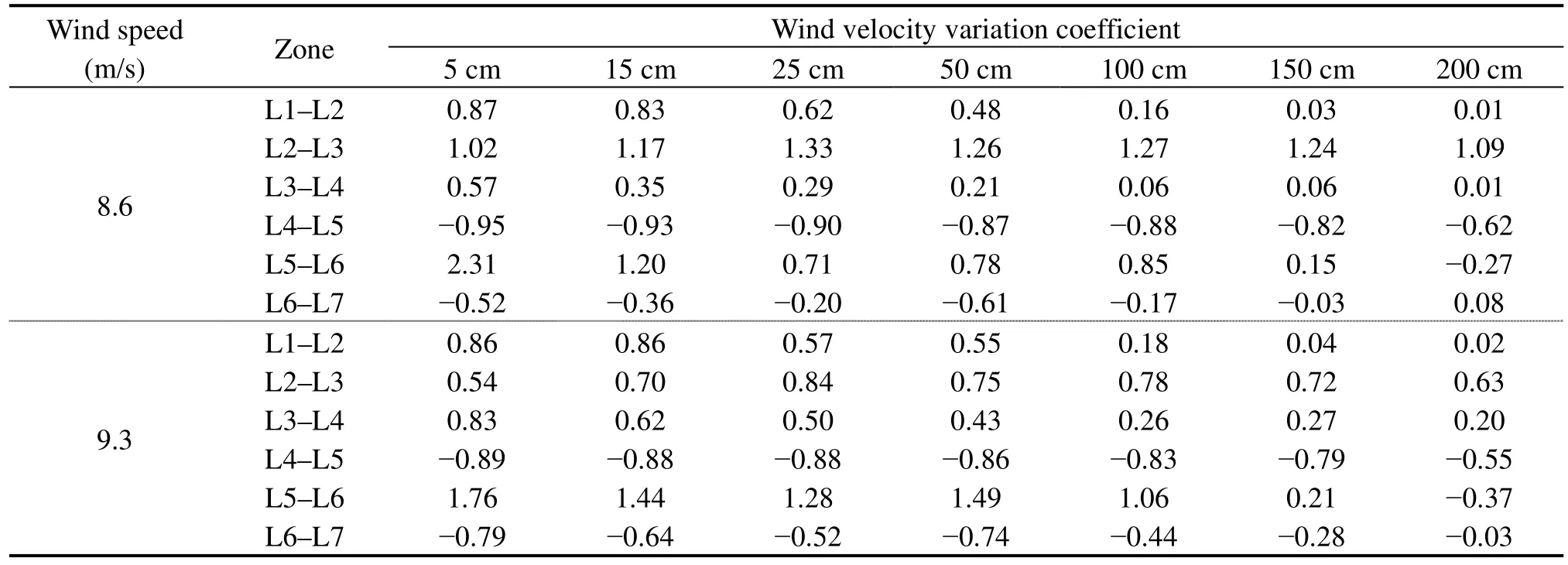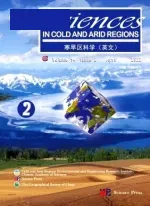Discussion on wind factor influencing the distribution of biological soil crusts on surface of sand dunes
YongSheng Wu , Hasi Erdun , RuiPing Yin , Xin Zhang , Jie Ren , Jian Wang ,XiuMin Tian , ZeKun Li , HengLu Miao
1. Institute of Water Resources for Pastoral Area, The Ministry of Water Resources of China, Hohhot, Inner Mongolia 010020, China
2. College of Resources Science and Technology, Beijing Normal University, Beijing 100875, China
1 Introduction
Biological soil crusts (BSCs) are ubiquitous communities of diminutive organisms such as cyanobacteria,green algae, lichens, mosses and others associated closely with particles of surface soil, forming a cohesive thin horizontal layer (Liet al., 2010). They are widespread in arid and semi-arid areas, which occupy more than 40% of the terrestrial surface (Belnap, 2006). On a larger scale, the distribution of biological soil crusts is influenced by climate, soil and precipitation conditions,with distinct degree of development across the regions(Belnapet al., 2001; Belnap, 2006). On a smaller scale,the development and distribution of biological soil crusts are subject to the influence of microclimate (Kidronet al., 2000), vegetation (Liet al., 2003), soil (Bowkeret al., 2005), water (Eldridge, 1997) and geomorphologic features (Zhanget al., 2004; Liet al., 2010). A recent study noted that the distribution of biological soil crusts is selective to different parts of sand dunes (Zhanget al.,2004). Liet al. (2010) has found that micro-geomorphology has created various habitats at a small-scale affecting development of biological soil crusts through reallocating related abiotic and soil prop-erties. However, few studies have focused on the relationship between the change of surface airflow caused by geomorphologic variation and the distribution of biological soil crusts.
Development and distribution patterns of biological soil crusts in the southern Mu Us Sandy Land of northern China were investigated in our study, and we found that the development of biological soil crusts can be divided into three stages, with certain selectivity to different parts of sand dunes (Wuet al., 2010). We hypothesize that wind is an important influential factor for the development and distribution of biological soil crusts on dune surfaces, and there is a significant correlation between airflow changes and the distribution of biological soil crusts. In this study, the relationship between wind and distribution characteristics of biological soil crusts were discussed by observing the surface airflow of sand dunes and the development characteristics of biological soil crusts. The results not only deepen our understanding of the development and distribution patterns of biological soil crusts on dune surfaces, but also highly significant to scientific management and ecological rehabilitation of damaged ecosystems.
2 Study area and methods
The experimental area was located in the south margin of Mu Su Sandy Land, which is a transitional area from Ordos Plateau to the Loess Plateau in northern Shaanxi, China. The geographic coordinates of this area are 108°50′54″E–108°58′00″E, 37°38′42″N–37°42′42″N,with an altitude of 1,350 m and semi-arid climate. It is hot and rains heavily in summer, and dry, cold and windy in winter. The average annual temperature is 7.9 °C, and average annual rainfall is 394.7 mm. The wind season is from March to May, average annual wind speed is 3 m/s, and prevailing wind is northwest direction (Figure 1). It primarily rains in summer, with large precipitation variability where maximum rainfall can reach 744.6 mm (1964) and minimum rainfall of only 205 mm (1965). Average evaporation over the years is 2,484.5 mm, which is 6.32 times that of average annual rainfall. The landscape is featured by mobile, semi-fixed and fixed dunes, lake basin and beach land. Biological soil crusts developed widely on fixed and semi-fixed dunes, and are mainly algal crusts, while moss crusts are mainly found on the inter dune area. The mechanical composition of dune sediments is basically fine sands(Hasiet al., 2006). The study area belongs to a warm temperate grassland with low vegetation coverage, and the main plants areArtemisia ordosicaKrasch.,Agriophyllum squarrosumMoq.,Corispermum puberulumIljin, andPsammochloa villosa(Trin.) Bor.
A gradient anemometer was used to measure wind speed. The wind speed measuring range was 0.3–30 mm,with a resolution of 0.1 m/s. A typical fixed sand dune with well-developed biological soil crusts was selected in the research area. The dune inclined by 270°–105°,standing about 12 m in height. The windward slope was 40 m long, and the leeward slope was 15 m long, with a slope of 10° and 25°, respectively. The observation points were laid along the longitudinal axis of the sand dune(northwest–southeast). One observation point was arranged for every 13 meters starting from the foot of the windward slope, and total of three points were set on the windward slope. One observation point was arranged for every four meters starting from the crest to the foot of leeward slope, and total of three points were set on the windward slope. Thus, seven observation points were chosen including the one on the crest (Figure 2).

Figure 1 Wind rose diagram of the research area(2006–2009)

Figure 2 Arrangement of observation sites
When observing the surface airflow of the dune, the height of the observation points were set as 5, 15, 25, 50,100, 150, 200, 300 and 400 cm, respectively. A reference station was located on the crest for simultaneous observation. The height setting of seven observation points was consistent with the mobile station. The anemometer recorded wind speed data every 30 s, and the observation lasted for 5 min each time for each point. When analyzing the airflow data, the wind speed measured at the points on the longitudinal axis and that measured by the reference station were standardized to characterize the airflow variation of the same time point. After the wind speed observation was finished, the thickness of biological soil crusts on the corresponding point was measured with a Vernier caliper, for six times at each point. The shear strength on the corresponding point was measured with a portable shearing device. Ten measurements were made for each point. Malvern particle size analyzer was used to measure the particle size.
3 Results and analysis
3.1 Surface airflow characteristics on fixed dune
The wind direction was basically stable during the observation process, and wind speed range at the height of 400 cm was 2.1–10.7 m/s. In view of the wind speed data of the observation points (Figure 3), the near-surface airflow (<200 cm) was the smallest at the foot of windward slope, and increased significantly from the foot of windward slope to the crest, reaching the largest point at the crest. The near-surface airflow decreased on the leeward slope, from the crest to the middle-upper part of the leeward slope, while increased somewhat at the middle-lower part. When reaching the slope foot, the airflow decreased. That is to say, there was a zone with relative higher wind speed in the middle-lower part of the leeward slope, but the wind speed at each observation point was lower than that on the dune top.Near-surface airflow had a higher speed in the lower-middle part of the leeward slope, probably caused by a backflow along the leeward slope. Thus, the wind speed in the lower-middle part increased. The speed variation of airflow in the higher position (200–400 cm)was different from that of near-surface airflow, and the airflow in this region decreased first and then increased from foot to crest, with the highest speed on the crest.The airflow in this zone presented a decreasing trend along the leeward slope, as distinct from the situation that the near-surface airflow increased in the lower-middle part of the leeward slope.

Figure 3 Characteristics of surface airflow at different wind speeds (a: 8.6 m/s; b: 9.3 m/s)
In order to quantitatively describe airflow changes at each observation point, a wind velocity variation coefficient was defined here.

whereMis wind velocity variation coefficient, andU1andU2are respectively wind speed at starting and ending points. According to the aforementioned definition, the wind velocity variation coefficients between observation points are presented in Table 1. Wind velocity variation coefficient on the windward slope was positive, showing an increase followed by a decrease of the coefficient from the slope foot to the crest. On the leeward slope, the wind velocity variation coefficient in the middle-upper part was negative, and that of the middle-lower part was positive.This shows that the backflow formed on the leeward slope resulted in a decrease of wind speed in the lower-middle part. The changes of wind velocity variation coefficient across the observation points indicated that the variation pattern of near-surface airflow was very complex (Table 1).

Table 1 Wind velocity variation coefficient at different observation sites
3.2 Development characteristics of biological soil crusts
The development characteristics of biological soil crusts at each observation site are presented in Table 2.The thickness of biological soil crusts was the largest at the foot of windward slope. With an increase of height from the slope foot to the middle-upper part, the average thickness of crusts decreased considerably. The average thickness of biological soil crusts at the foot of leeward slope was higher, and that from the foot to the middle part of the dune the thickness decreased. The biological soil crusts were well developed in the lower-middle part of the dune, while in the middle-upper part there was no biological soil crusts distributed or only early stage of crusts could be found. The variation trend of shear strength of biological soil crusts at each observation site was basically consistent with that of thickness of biological soil crust. That is, the shear strength was lower in the middle-upper part of the dune than at the foot.
The mechanical composition of biological soil crusts at different geomorphologic positions are presented in Table 3. The compositions are mainly fine sands, followed by medium sand. There were differences in the composition as the geomorphologic position varied. The fine particulate matter contained in the biological soil crusts was largest in number at the foot of windward and leeward slopes, while its content decreased in the middle part of the windward slope. The percentage of fine particulate matter in the crusts presented a decreasing trend from the slope foot upwards.

Table 2 Development characteristics of biological soil crusts at each observation sites

Table 3 Mechanical composition of biological soil crusts at different geomorphologic positions
3.3 Correlation between wind speed and development characteristics of biological soil crust
The correlations between wind speed at each observation point with thickness and shear strength of biological soil crust are presented in Figure 4. The thickness, shear strength of biological soil crusts and wind speed were negatively correlated, that is, thickness and shear strength were lower as the wind speed increased, while higher as the wind speed decreased.There was no biological soil crusts found at the dune top where the wind speed was the highest. It has been shown that there were well-developed biological soil crusts in the regions where the wind speed was slow,such as in the lower-middle parts of the windward and leeward slopes, and in the lowland between the dunes;and there was no distribution of biological soil crusts at the crest.

Figure 4 Relationship between development characteristics of biological soil crusts and wind speed
4 Discussion
The biological soil crusts on dune surfaces are formed by the joint action of dust fall, raindrop impact and microorganisms in the process of sand stabilization on the basis of physical crust (Duanet al., 1996; Fanget al.,2007; Zhang and Wang, 2008). Fine particulate matter derived from atmospheric dust increases the thickness of crusts and at the same time, provides minerals and chemical elements, which is favorable for microbial invasion (Fanget al., 2007). As low-nutrient microbes(such as bacillus) invade the crust (Wuet al., 2004), their viscous outer walls and secretion become the media for sand interconnection (Huet al., 2002; Wuet al., 2004).
The formation and development of biological soil crust is a dynamic process constantly developing and burying (Jiaet al., 2010). When the wind speed exceeds 4 m/s, the bare sand starts to move, covering the surface of biological soil crusts which affects its further development (Jiaet al., 2010). Although the prevailing wind in the research area is in the northwest direction (Figure 1),the airflow in the lower-middle part of the sand dune or at the slope foot is significantly slower than the wind speed at the crest. This is beneficial to the formation and development of biological soil crusts. Although there are differences in the near surface airflow and wind velocity variation coefficients between observation points under different wind speed conditions (Table 1), the wind speed in the middle-upper part of the windward slope and the crest is the largest. Thus, sediment in this area is usually in a state of activation, making it difficult to form biological soil crusts; or the biological soil crusts are often damaged under the effect of strong winds, making it difficult to well-developed stage. Although the airflow in the middle-upper part of the leeward slope is lower(Figure 3), the sediment from wind erosion are mostly concentrated in this zone (Nicklinget al., 2002), which inhibits further development of biological soil crusts.Although the wind speed increases slightly in the lower-middle part of the leeward slope, the smaller absolute value of wind speed in this zone also makes it an ideal area for the development of biological soil crusts. Compared with other positions of the sand dune, the inter dune area has optimal water and temperature conditions, with minimum degree of interference from aeolian sand activity. Therefore, the biological soil crusts are well developed here, from the single microbial crust to algal and lichen crusts, and finally to an advanced stage of biological soil crusts, which is a mixture of moss and algal crusts.
The aeolian sand activity on the dune surface interacts with the development of biological soil crusts. On one hand, changes of airflow caused by geomorphologic variation create beneficial conditions for the development of biological soil crusts in the lowland between the dunes or the lower-middle part of the dune. Biological soil crusts can hardly develop where aeolian sand activity is frequent or only an early stage of biological soil crust may develop. On the other hand, the formation of biological soil crusts can stabilize the dune surface and improve anti-wind erosion ability (Zhang JHet al., 2006;Zhang ZSet al., 2007), playing a crucial role in the further development of biological soil crusts.
There are many factors that influence the development and distribution of biological soil crusts (Liet al., 2010).This paper only discussed the relationship between airflow changes caused by geomorphologic variation and the development of biological soil crusts. In fact, vegetation has played an important role in the formation and development process of biological soil crusts, the prerequisite of which is sand stabilization. Due to the effect of moving sand fixed by vegetation, the characteristics of the surrounding airflow changes (Yanget al., 2007), which will probably provide a stable environment for the development of biological soil crusts. However, more empirical research is needed before final confirmation.
This project is supported by National Natural Science Foundation of China (Grant No. 41201050); Scientific Research Funds of Institute of Water Resources and Hydropower Research of China and National "Twelfth Five-Year"Plan for Science & Technology (2012BAD16B0202).
Belnap J, 2006. The potential roles of biological soil crusts in dryland hydrologic cycles. Hydrological Processes, 20: 3159–3178.
Belnap J, Budel B, Lange OL, 2001. Biological soil crusts: characteristics and distribution. In: Belnap J, Lange OL (eds.). Biological Soil Crusts: Structure, Function and Management. Springer-Verlag,Berlin, pp. 3–30.
Bowker MA, Belnap J, Davidson DW, Philips SL, 2005. Evidence for micronutrient limitation of biological soil crusts: importance to arid-land restoration. Ecological Applications, 15: 1941–1951.
Duan ZH, Liu XM, Qu JJ, 1996. Study on formation mechanism of soil crust in the Shapotou Area. Arid Zone Research, 13(2): 31–37.
Eldridge DJ, 1997. Environmental factors relating to the distribution of terricolous bryophytes and lichens in semi-arid Australia. Bryologist, 100: 28–39.
Fang HY, Cai QG, Chen H, Qiu YL, 2007. Mechanism of formation of physical soil crust in desert soils treated with straw checkerboards.Soil & Tillage Research, 93: 222–230.
Hasi E, Zhuang YM, Wang L, Wang Z, 2006. Grain-size variation on a transverse dune and response to wind direction changes on southern edge of Mu Us Desert. Progress in Geography, 25(6):42–52.
Hu CX, Liu YD, Song LR, Zhang DL, 2002. Effect of desert soil algae on the stabilization of fine sands. Journal of Applied Phycology, 14:281–292.
Jia RL, Li XR, Tan HJ, He HY, Su JQ, Hao Y, 2010. Mechanism of photosynthetic recovery of biological soil crusts after the removal of sand burial disturbance. Journal of Desert Research, 30(6):1299–1304.
Kidron GJ, Barzilay E, Sachs E, 2000. Microclimate control upon sand microbiotic crusts, western Negev Desert, Israel. Geomorphology,36(1–2): 1–18.
Li XR, He MZ, Zerbe S, Li XJ, Liu LC, 2010. Micro-geomorphology determines community structure of biological soil crusts at small scale. Earth Surface Processes and Landforms, 35: 932–940.
Li XR, Zhou HY, Wang XP, Zhu YG, O’Conner PJ, 2003. The effects of sand stabilization and revegetation on cryptogam species diversity and soil fertility in the Tengger Desert, Northern China. Plant and Soil, 251: 237–245.
Nickling WG, Neuman CM, Lancaster N, 2002. Grainfall processes in the lee of transverse dunes, Silver Peak, Nevada. Sedimentology,49(1): 191–209.
Wu N, Fan BR, Zhang YM, 2004. Effects and ecological significance of soil-inhabiting microorganisms in the formation of biological soil crusts. Arid Zone Research, 21(4): 444–450.
Wu YS, Hasi E, Li SQ, Liu HQ, Jia ZJ, 2010. Development characteristics of biological soil crusts on sand dune in southern Mu Us Sandy Lands. Journal of Soil and Water Conservation, 24(5):258–261.
Yang WB, Lu Q, Wu B, Yang HY, Zhao AG, Wang JY, Hu XL, 2007.Wind tunnel experiment on wind flow structure and windbreak effect within low-covered shrubs under different arrangements.Journal of Desert Research, 27(5): 791–796.
Zhang JH, Ma QL, Liu HJ, Yang ZH, Zhang DK, 2006. Effect of wind-breaking and sand-fixing of vegetation in progressive succession on desertification land in arid area. Journal of Desert Research,26(6): 903–909.
Zhang YM, Fan YX, Fan BR, 2004. Distribution characteristics of biological crust on sand dune surface in Gurbantunggut Desert,Xinjiang. Journal of Soil and Water Conservation, 14(4): 61–65.
Zhang YM, Wang XQ, 2008. Research on Biological Crusts in Zhunger Deserts. Science Press, Beijing.
Zhang ZS, Zhao AG, Dong ZB, Li H, 2007. Characteristics of natural restored microbiotic crusts against soil erosion. Journal of Desert Research, 27(4): 558–562.
 Sciences in Cold and Arid Regions2013年6期
Sciences in Cold and Arid Regions2013年6期
- Sciences in Cold and Arid Regions的其它文章
- Identification of an AP2 gene related to open flowering in diploid wheat (Triticum monococcum)
- Involvement of anti-oxidative enzymes, photosynthetic pigments and flavonoid metabolism in the adaptation of Reaumuria soongorica to salt stress
- Spatial coupling relationships of gas hydrate formation in the Tibetan Plateau
- The morphological characteristics of glacial deposits during the Last Glaciation, taking the Parlung Zangbo River Basin as an example
- The change of Ningchan River Glacier No. 3 at Lenglongling, east Qilian Mountain, China
- The influence of human activity and precipitation change on mid-long term evolution of landslide and debris flow disasters
